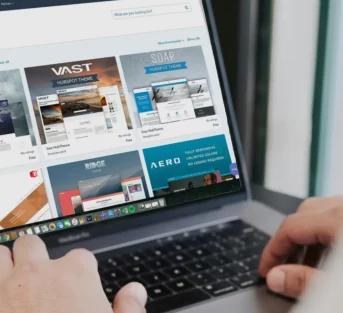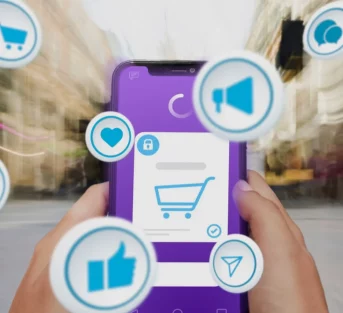Gratification, that’s the name of the game. You want something, and you want it like 5 minutes back.
The rise of instant gratification in retail has fuelled tremendous growth in Quick Commerce. By 2027, this sector is projected to reach $72 billion globally growing at 28% CAGR. While the art of quick commerce is hinged on ultra-fast deliveries, apps like Zepto are breaking the ceiling. They promise to deliver groceries, electronics, and household essentials at your doorstep in under 10 minutes.
Since its launch in 2021, Zepto has risen to $1.4 billion valuation, piggyback riding on a network of dark stores and smart inventory management that ensures swift deliveries. But what would it cost of developing a quick commerce app like Zepto?
In this blog, we break down the key factors, prime features, tech stack, and the estimated costs to build a competitive quick commerce app in 2025.
TL;DR
- Cost Range: $100K–$350K+ (MVP to advanced features).
- MVP (Basic): $50K–$100K (core features like cart, payments, tracking).
- Advanced: $150K–$400K+ (AI, dark stores, 10-min delivery tech).
- Key Cost Drivers:
- Real-time inventory sync ($15K–$30K).
- Delivery tracking & route optimization ($20K–$50K).
- Dark store integration ($25K–$60K).
- Timeline: 3–6 months (MVP), 9–18 months (full-scale).
- Tech Stack: React Native/Flutter, Node.js/Python, Firebase/PostgreSQL.
- Cost-Saving Tips:
- Use white-label solutions (e.g., Appscripcuts costs by 40–60%).
- Outsource development (20–20–50/hour offshore rates).
- Revenue Models: Delivery fees, subscriptions, ads, or commissions.
Bottom Line: Quick commerce apps are booming, but costs vary widely based on features. Start with an MVP, then scale!
Estimated Time, Cost & Features For App Development
| Type of App | Timeline | Cost (USD) | Key Features |
| Simple App | 4–5 months | $30,000–$60,000 | – Basic delivery functionality |
| – Limited product catalog | |||
| – Simple UI/UX | |||
| – Basic user authentication | |||
| – Manual dispatch/logistics | |||
| Moderately Complex App | 6–10 months | $60,000–$150,000 | – Real-time order tracking |
| – Online payments (UPI, cards, wallets) | |||
| – Push notifications | |||
| – Integration with local stores | |||
| – Enhanced UI/UX | |||
| – Analytics dashboard | |||
| Highly Complex App | 10–15 months | $150,000–$350,000+ | – Voice search or AR features |
| – AI-based personalization | |||
| – Dynamic pricing and offers | |||
| – Rider/partner integration | |||
| – Live support chatbot | |||
| – Advanced analytics & dashboards | |||
| – Integration with food delivery/ride-hailing platforms |
Estimating the Cost of Developing a Quick Commerce App like Zepto
The cost to develop an app like Zepto depends on the complexity, number of features, development team location, and tech stack. Below is a breakdown of estimated costs by development stage:
| Stage | Cost Range (USD) | Notes |
| 1. Discovery & Planning | $5,000 – $10,000 | Market research, competitor analysis, feature planning, UI/UX wireframes. |
| 2. UI/UX Design | $8,000 – $15,000 | App screens for customer, delivery partner, and admin panels. |
| 3. Frontend Development | $20,000 – $40,000 | Mobile app (iOS/Android) + Web interface (if applicable). |
| 4. Backend Development | $25,000 – $45,000 | APIs, database, server logic, scalability, real-time systems. |
| 5. Features Integration | $30,000 – $60,000 | Cart, search, live tracking, payments, order history, notifications, etc. |
| 6. Admin Panel Development | $8,000 – $15,000 | For inventory, users, analytics, order management. |
| 7. QA & Testing | $5,000 – $10,000 | Functional, performance, security, and cross-platform testing. |
| 8. Deployment & Maintenance | $3,000 – $8,000 | App Store/Play Store launch, minor updates, bug fixes. |
Total Estimated Cost Range
$100,000 – $200,000+
This estimate is for a MVP to mid-range full-featured Q-Commerce app. Costs may rise with complex integrations like AI-based recommendations, warehouse automation, or hyper-local delivery optimization.
Feature-Based Cost Estimation
| Feature | Cost Estimate | Notes |
| User Registration & Profile | $3,000 – $5,000 | Sign-up/sign-in via email, phone, social media, profile management. |
| Product Listings & Search | $6,000 – $10,000 | Smart search, filters, categories, product details. |
| Real-Time Inventory Management | $7,000 – $12,000 | Stock syncing, availability updates, warehouse linkage. |
| Smart Cart & Checkout | $5,000 – $8,000 | Add/remove/edit items, promo codes, delivery instructions. |
| Payment Gateway Integration | $4,000 – $7,000 | Stripe, Razorpay, PayPal, UPI, cards, wallets. |
| Real-Time Order Tracking (Map) | $8,000 – $15,000 | GPS tracking, estimated delivery time, delivery partner visibility. |
| Push Notifications | $2,000 – $4,000 | Alerts for order confirmation, status changes, promotions. |
| Ratings & Reviews | $2,000 – $4,000 | Feedback system for products and delivery. |
| Offers & Promo Code System | $3,000 – $5,000 | Manageable via admin, coupon validation engine. |
| Delivery Partner App Features | $10,000 – $15,000 | Route mapping, order acceptance, earnings tracker. |
| Admin Dashboard | $8,000 – $12,000 | Manage products, users, orders, analytics, support, warehouse control. |
| Analytics & Reports | $4,000 – $7,000 | Sales reports, user behavior, delivery performance. |
| Customer Support Integration | $3,000 – $5,000 | Chatbot/live chat, FAQs, contact center integration. |
| Subscription/Prime Module (Optional) | $5,000 – $8,000 | For recurring delivery benefits, loyalty rewards, etc. |
| Multilingual & Multi-Currency (Optional) | $4,000 – $6,000 | For wider geo-reach, especially international expansion. |
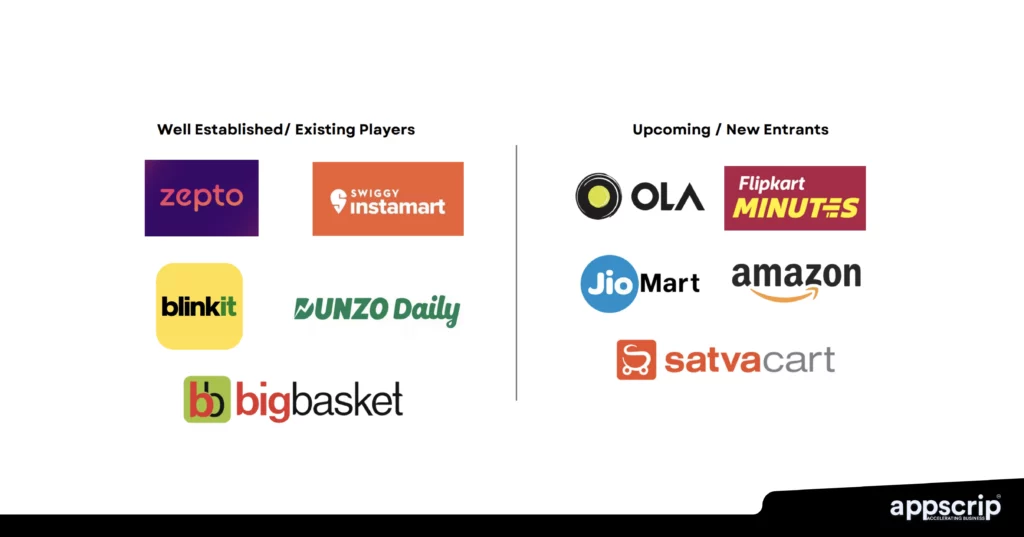
Factors Influencing the Cost of Developing a Quick Commerce App
1. App Complexity and Feature Set
| App Type | Features | Approx. Cost Impact |
| Simple | Basic delivery, limited products, simple UI | Low |
| Moderately Complex | Real-time tracking, online payments, push notifications | Medium |
| Highly Complex | AI/ML, voice ordering, AR, multi-store integration, partner modules | High |
2. Design and User Experience
| Design Focus | Elements Included | Approx. Cost Impact |
| Basic UI/UX | Standard components, minimal animations | Low |
| Custom UI/UX | Brand-focused UI, micro-interactions, accessibility design | Medium |
| Premium UI/UX | Unique visuals, motion design, dynamic layouts, UX testing | High |
3. Backend Infrastructure and Scalability
| Infrastructure Level | Examples | Cost Impact |
| Basic | Simple database, REST APIs | Low |
| Scalable | Microservices, cloud hosting, real-time DBs | Medium |
| Enterprise | Multi-region, load balancing, containerized (K8s) | High |
4. Real-Time Capabilities
- Live order tracking with accurate ETAs
- Dynamic inventory/stock updates per location
- Requires low-latency infrastructure (e.g., WebSockets, Firebase)
- Increases backend complexity and cost due to real-time data sync
5. Platform Choice (iOS, Android, Web)
| Platform Approach | Description | Pros | Cons | Cost Impact |
| iOS Only | App is built only for iPhones/iPads using Swift | – Premium user base | – Limited market reach | Low |
| – Faster development | ||||
| Android Only | App built only for Android using Kotlin or Java | – Wider audience reach | – Fragmented device ecosystem | Low |
| – Affordable devices | ||||
| Native (iOS + Android) | Separate codebases for each platform | – Best performance | – Higher dev & maintenance cost | High |
| – Access to full native features | ||||
| Cross-Platform (Flutter, React Native) | One codebase for both platforms | – Faster development | – Limited native API access | Medium |
| – Reduced cost & effort | – Slight performance trade-off | |||
| Web App | Admin/vendor/user access through browser-based PWA or dashboard | – Platform agnostic | – Requires responsive design | Medium to High |
| – Easy updates | – Not as intuitive as native apps |
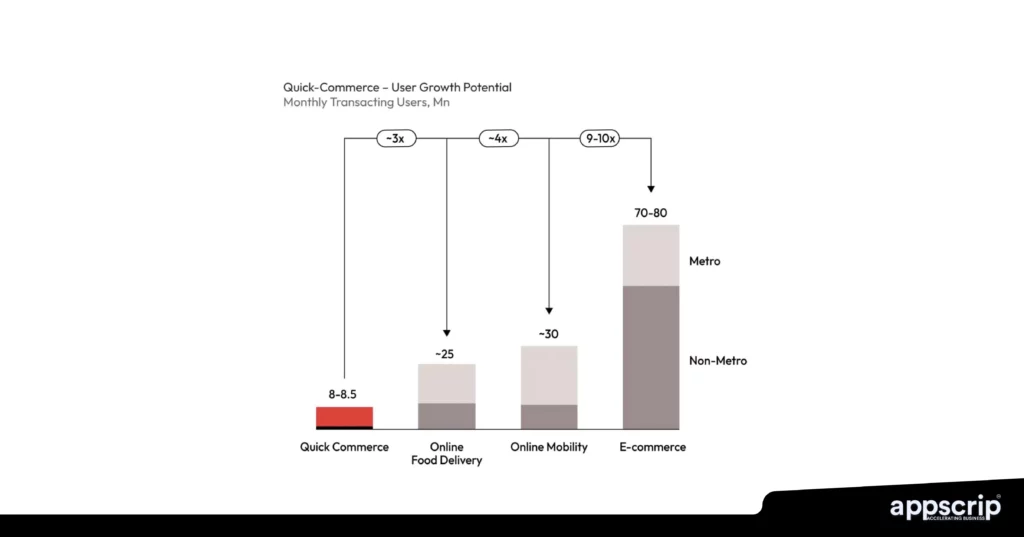
6. Development Team Location and Expertise
| Region | Avg Hourly Rate (USD) | Pros | Cons | Cost Impact |
| North America | $100–$200/hr | – High-quality work | – Very expensive | High |
| – Advanced tech expertise | ||||
| Western Europe | $80–$150/hr | – Reliable | – Costly | High |
| – Strong project management | – Time zone differences (for some) | |||
| Eastern Europe | $40–$80/hr | – Good talent pool | – Varies by country/team | Medium |
| – Balanced cost-quality ratio | ||||
| South Asia (India, etc.) | $20–$50/hr | – Cost-effective | – Variable quality | Low |
| – Large talent base | – Requires vetting properly | |||
| In-House Team | Depends on geography | – Full control | – High recurring costs (salaries, benefits, infra) | High |
| – Close collaboration | ||||
| Freelancers | $15–$100/hr | – Flexible engagement | – Reliability issues | Varies |
| – Niche expertise | – Needs strong PM oversight |
7. Third-Party Integrations
- Payment gateways (Razorpay, Stripe, etc.)
- Location and map services (Google Maps, Mapbox)
- Analytics tools (Firebase, Mixpanel, GA)
- Logistics APIs for external delivery fleets
- Costs vary based on number and complexity of integrations
8. Admin Panel and Partner Dashboards
- Admin panel: manage users, orders, payments, inventory
- Partner/vendor dashboards: order updates, availability, analytics
- Requires role-based access and robust backend logic
- Adds significant UI/UX and dev time
9. Security and Compliance Requirements
- PCI-DSS compliance for secure payments
- End-to-end data encryption (SSL/TLS, at-rest encryption)
- GDPR or region-specific privacy policy enforcement
- Extra effort needed on backend architecture and audit trails
10. Maintenance and Post-Launch Support
- Regular bug fixes, security patches, and performance tuning
- Compatibility updates for OS changes (Android/iOS)
- Infrastructure scaling and uptime monitoring
- Often structured as monthly retainers or AMC plans
11. AI/ML Integration
- Personalized recommendations (e.g., products, offers)
- Predictive delivery ETAs based on past trends
- Smart search with auto-suggestions
- Requires data pipelines, model training, and integration — high cost & complexity
12. Time to Market (Speed of Delivery)
- Faster delivery may require a larger team or longer hours
- Higher project costs due to rush resources
- Increases the risk of technical debt and post-launch fixes
13. Custom vs. Off-the-Shelf Solutions
| Approach | Description | Pros | Cons | Best For |
| Custom Development | Built from scratch, tailored to unique business needs | – Fully customizable | – High upfront cost | Large enterprises with niche needs |
| – Scalable long-term | – Longer time to launch | |||
| – Unique brand experience | – Requires extensive planning | |||
| Off-the-Shelf Solution | Ready-made platform with basic functionality and fast deployment | – Lower cost | – Limited flexibility | Startups or MVPs |
| – Faster time-to-market | – May require compromises | |||
| – Proven architecture | – Vendor dependency | |||
| Pre-Built Script (Appscrip) | Hybrid approach using proven modules with customizability built-in | – Balanced cost and speed | – May not support all niche use cases without tweaks | High-growth startups & scale-ups |
| – Customizable | ||||
| – Battle-tested core features |
Why Choose Appscrip’s Pre-Built Scripts?
Appscrip offers a middle ground between full custom development and basic off-the-shelf platforms. Our scripts are:
- Modular & Scalable – Add features as you grow
- Time & Cost Efficient – Get to market 60% faster
- Battle-Tested – Used by real-world quick commerce leaders
- Customizable – UI/UX, workflows, integrations — all tailored to your brand
Whether you’re launching a new venture or scaling an existing one, Appscrip’s pre-built solutions give you the agility of off-the-shelf with the power of custom.
14. Testing and Quality Assurance
- Includes manual, automated, and device compatibility testing
- Performance/load testing for peak traffic scenarios
- Ensures reliability but adds to timeline and cost
- Skipping QA leads to poor user experience and downtime
15. Marketing and Launch Readiness Tools
- Referral systems and promo engines
- Influencer dashboards or affiliate tracking
- A/B testing tools for feature optimization
- Pre-installed analytics and crash reporting tools
- Adds to development but crucial for user acquisition and growth
Key features and functionalities of a Quick Commerce app
1. Core Features for Customers
A. User-Friendly Onboarding & Interface
- Social login (Google, Apple, Phone OTP) – Faster signups.
- Location detection – Auto-pinpoints delivery address.
- Intuitive UI/UX – Easy navigation, quick search, and smart filters.
B. Smart Product Discovery
- Search bar with autocomplete & voice search
- AI-powered recommendations (e.g., “Frequently bought together”)
- Category-wise sorting (Groceries, Electronics, Pharma, etc.)
C. Instant Checkout & Payments
- Multiple payment options (UPI, Cards, COD, Wallet)
- One-click reorder for repeat purchases.
- Real-time cart updates (price changes, stock availability).
D. Ultra-Fast Delivery Tracking
- 10-30 minute delivery promise with live tracking.
- Delivery agent GPS tracking (like Uber).
- Delivery time slots (Express vs. Scheduled).
E. Post-Purchase Support
- In-app chat/call support.
- Easy returns/refunds.
- Order history & receipts.
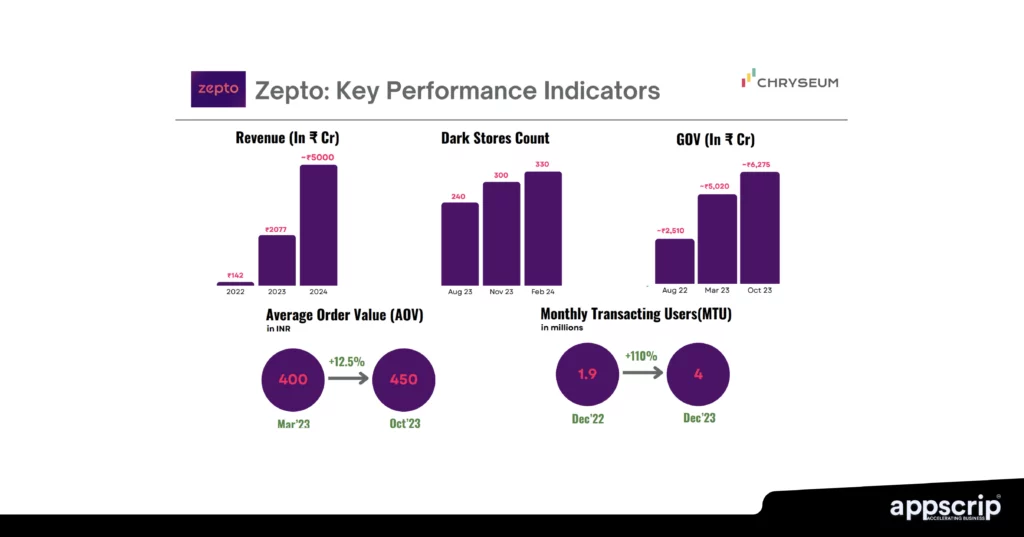
Zepto performance indicators
2. Must-Have Features for Sellers (Dark Stores/Retail Partners)
- Inventory management dashboard (real-time stock updates).
- Order fulfilment alerts.
- Performance analytics (sales, returns, peak hours).
- Automated invoicing & settlements.
3. Admin Panel (Backend Control)
- Real-time order monitoring.
- Dynamic pricing & discount management.
- Fraud detection & dispute resolution.
- Delivery fleet management (assign riders, optimize routes).
4. Advanced Tech Integrations
- AI/ML – Demand forecasting, personalized suggestions.
- Geofencing – Auto-assign nearest delivery agents.
- Cloud Kitchen/Dark Store ops – For hyperlocal inventory.
- Push notifications – Flash sales, order updates.
5. Scalability Features
- Multi-language & currency support (for expansion).
- API integrations (Payment gateways, logistics like Shiprocket).
- Cloud hosting (AWS/GCP) for handling peak loads.
Customer App Features
| Feature | Details |
| Home Page | Customers can view a range of products and categories that are available |
| Product Listing | Products in each category are listed with necessary details |
| Switch Categories | Customers can switch and navigate through various categories without returning to the home page |
| Product Description | Detailed product descriptions are provided to assist the buying decision |
| Order Cart | Customers can check the cart for added products and the billing details |
| Picker Recommendations | Picker can recommend substitutes for unavailable products to customers |
| Chat | Customers can chat with the assigned picker in real-time |
| Product Availability | Product availability can be reviewed and notified during checking out |
| Track Order | Customers can track from order acceptance to driver arriving at location |
| Membership | Introduce membership option and offer special discounts to members |
Picker App Features
| Feature | Details |
| Home Page | A list of tabs are shown where orders and their stages are displayed |
| Order Details | The store gets notified with all the necessary details of every order |
| Assign Picker | After accepting the order, admin can assign a picker for the customer |
| Chat | After order is accepted, picker can chat with the customer in real-time |
| Picking stages | Picker can update the stages: “Not Picked”, “Picked”, “In Review” or “Removed” |
| Suggest Substitutes | Picker can suggest alternate products for the items that are unavailable |
| Order Label | Picker can generate and print the label for each order for drivers to scan |
| Order Pick-up | Customer is notified immediately once the order is ready for pickup |
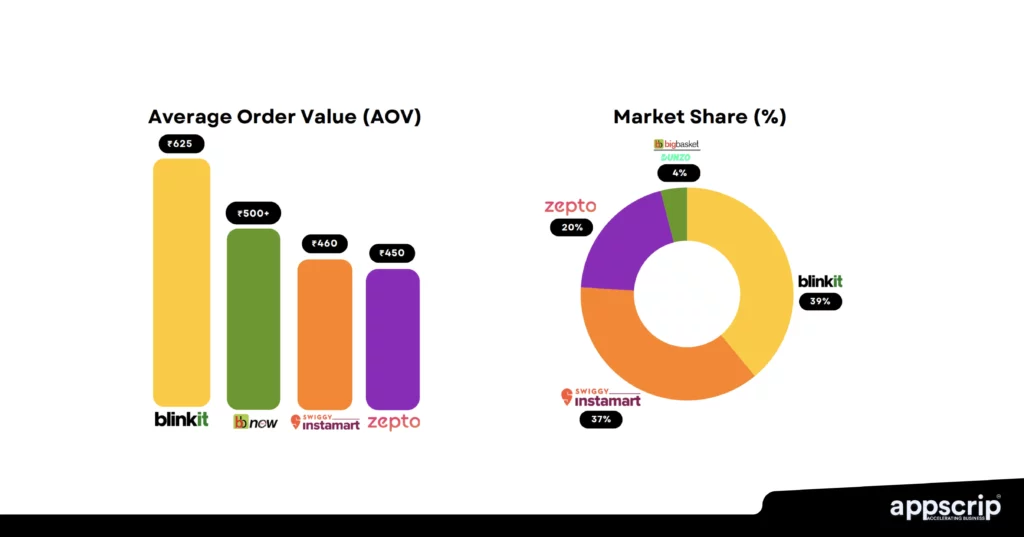
Driver App Features
| Feature | Details |
| Assigned Orders | Drivers will receive notifications of new orders to either accept or reject |
| Multiple Deliveries | Drivers can update multiple deliveries as and when orders are delivered |
| Pickup Proof | Drivers have to scan QR codes as a proof for picking-up the right order |
| Delivery Tracking | Drivers can send real-time updates after they arrive to pick up the order |
| Proof Of Delivery | Proof of delivery is customer signature or snapshot of order delivery |
| Reattempt Delivery | Drivers are allowed to reattempt a delivery with a valid reason for the same |
Admin Console Features
| Feature | Details |
| Promo Codes | Promo codes can be setup and made available for customers or by distribution through affiliates |
| Inventory Management | Inventory specific to each dark store and SKUs can be managed by the admin |
| App Updates | Manage app update settings and ensure users install the latest version |
| SEO Management | Manage SEO to ensure mobile responsiveness and SEO friendliness with sitemap and slug generation |
| Financial Accounting | Track and manage earnings of each dark store and delivery person |
| Track Analytics | Track order analytics of each dark store to improve customer experience |
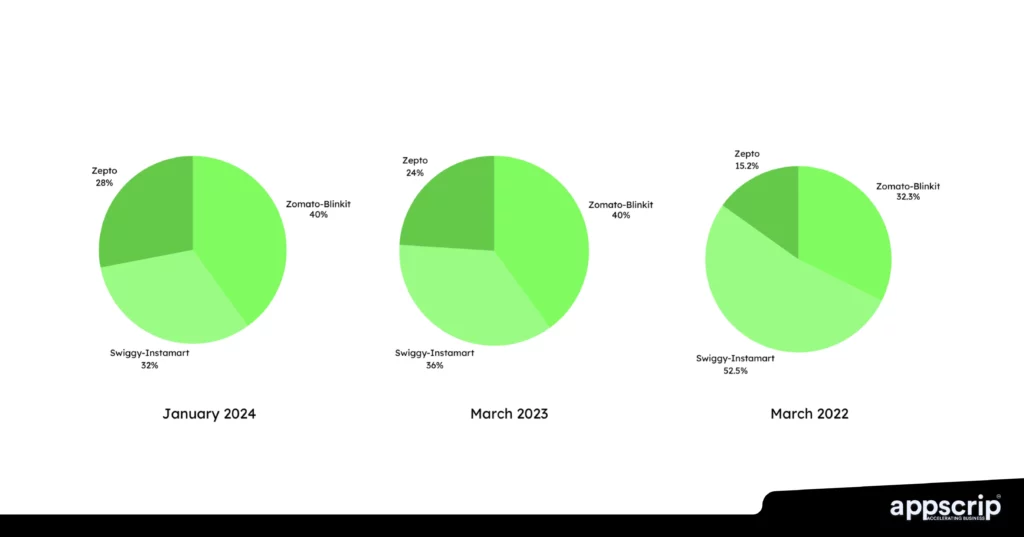
Conclusion: Cost Of Developing a Quick Commerce App Like Zepto
The rise of quick commerce apps like Zepto proves, gone are the days when speed and convenience were luxuries, because now they’re expectations. With hyperlocal demand surging and the global Q-Commerce market marching to $72 billion by 2027, entrepreneurs and businesses should grab the opportunity to get on the quick commerce bandwagon and launch an app.
Why Reinvent the Wheel?
Instead of building from scratch, accelerate your launch with a proven solution. Appscrip’s Quick Commerce software solution offers:
- Pre-built, Zepto-like features (live tracking, dynamic pricing, multi-store support).
- Customizable white-label apps for iOS, Android, and web.
- Scalable infrastructure ready to handle peak demand.
The future of retail is instant—don’t get left behind. Get in touch.


